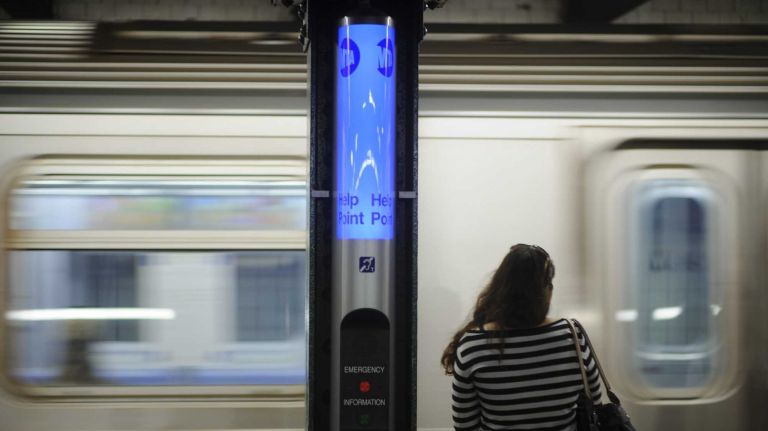
In an age of relentlessly rising subway fares and sharply shrinking station staffs, it’s reassuring to hear that the MTA is installing a 21st-century communications system on platforms that were built — in more than a few cases — when Teddy Roosevelt was president.
The new system is called Help Points, and riders may use it to report emergencies or ask for directions. To say it’s overdue is something of an understatement.
The city hosts more than 50 million tourists a year. And the subways carry several million passengers a day. The daily crush of humanity means crises are inevitable.
But the old communications system typically sounded about as intelligible as the on-train announcements — rapid bursts of inaudible words launched on a sea of static.
The idea now is that when straphangers accidentally drop something valuable on the tracks, see a crime going down, spot a sick person who needs help, or simply want directions, they can go to the Help Points device installed on the platform and punch the red button to report an emergency, or the green button to request information.
Communications with the booth agent near the station entrance or with the system’s rail control center should be loud and clear — and the response should be lightning fast.
Or at least we hope that’s the case. Given the cost of this system, it’s not too much to expect.
The MTA says it will shell out an average of $500,000 per station to install Help Points. In a metropolis with 468 underground or elevated stations, that adds up to major money. Wiring in antiquated stations must be upgraded. Power supplies must be bolstered.
Yet Help Points is worth the cost for its safety features alone. The MTA has installed 166 devices in 36 stations so far. It hopes to have 102 stations online by the end of this year. And next week, it will ask the MTA board for money to bring the total of online stations to 222.
We hope the board agrees.
The ultimate goal is to have Help Points in all stations by the end of 2019.
Train technology has vastly improved since the subway opened. Now it’s time to bring rider safety up to speed.


















